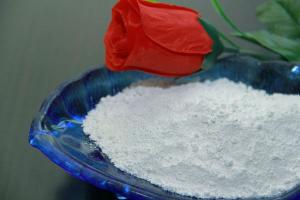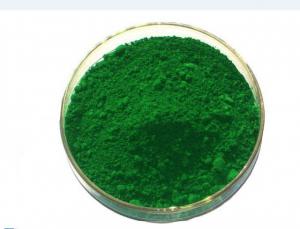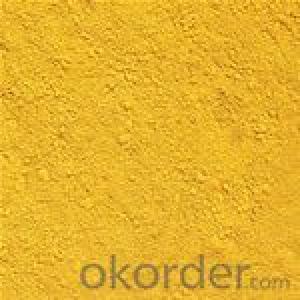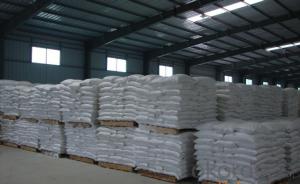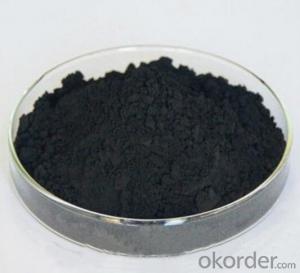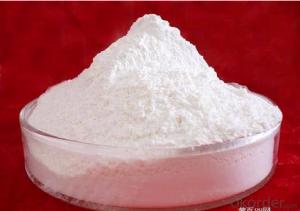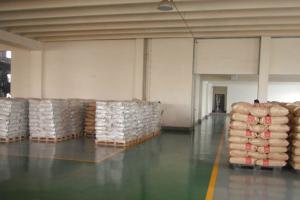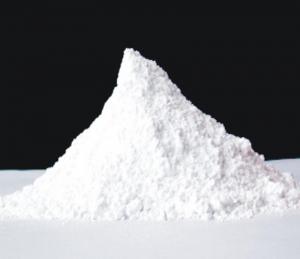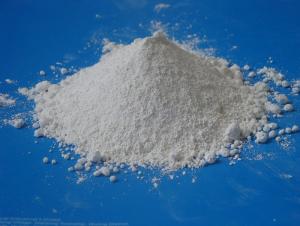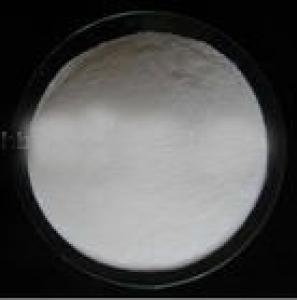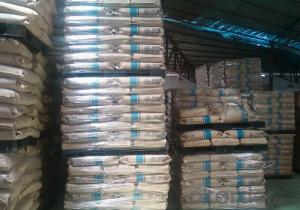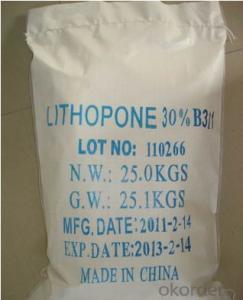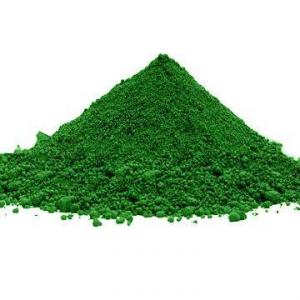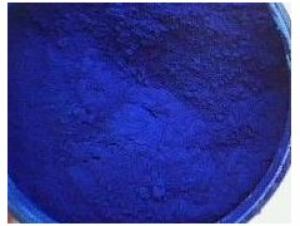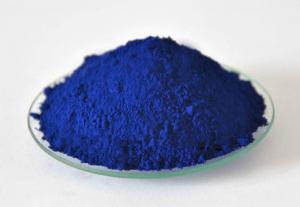Lithopone B301
- Loading Port:
- Shanghai
- Payment Terms:
- TT OR LC
- Min Order Qty:
- -
- Supply Capability:
- 3000 m.t./month
OKorder Service Pledge
OKorder Financial Service
You Might Also Like
Lithopone B301/B311
Product Description:
Yuejiang Brand -Lithopone B301/B311 is white powder, non-toxic, odorless, insoluble in water, no reaction with H2S and lye, release H2S gas when reacting with strong acids.
Applications:
Yuejiang Brand-Lithopone B301/B311is widely used in coatings, printing ink, rubber, plastic etc
Basic Information:
Name: | Lithopone |
CAS NO.: | 1345-05-7
|
|
|
Appearance: | White powder |
Technical Specifications:(Standard:Q/SNBJ1-2012)
Item | B301 | B311 |
Total zinc and barium sulphate | ≥99.0 | ≥99.0 |
zinc sulfide content, % | ≥28.0 | ≥30.0 |
zinc oxide content, % | ≤0.6 | ≤0.3 |
Color, compared with standard samples | better | better |
Tint reducing power, compared with standard samples | ≥100 | ≥105 |
105°C volatile matter, % | ≤0.3 | ≤0.3 |
Water solubles, % | ≤0.4 | ≤0.3 |
pH-value | 6.0-8.0 | 6.0-8.0 |
Oil absorption, g/ 100g | ≤14 | ≤12 |
Hiding power | ≥ 5 % of standard sample | ≥ 5 % of standard sample |
- Q: What are MAC eyeshadow pigments? Are they just like regular eyeshadow.. are they used the same way? Has anyone tried them and liked them?
- It's a loose powder that offers a much more pigmented color than the shadows. Though some of the pigments are offered in the same colors as the shadows, the color payoff is supposed to be much better. Personally, I have not used the pigments yet, but I would like to try them. You can also foil the pigments by adding liquid to them. I would not suggest doing this to the whole pigment. Add a little bit of the powder to the lid and add a drop of eyedrops. This will make the shadow like a paste and can be used for a very pigmented eyecolor. If you want to use it as loose powder, use a brush that packs on color really well... apply the powder to the brush and apply like normal eyeshadow. Just be aware that you may have a little more fallout b/c it's a loose powder as opposed to a packed eyeshadow.
- Q: okay so I have always used all the cheap makeup and I am sick of it! I was wondering if mac pigments will give me a lot of color without having to use half of the container. Most eyeshadows look nothing like they are supposed to on me. they are like 100 times lighter. I have seen beautiful things done with the pigments but they look like they could get everywhere really easy. will they give me vibrant color without getting all over?
- Unlike cheap and nasty makeup there great you only need a tiny bit and it goes so far, vibrant yes there colours are great and come out like there suppose to and stay on for ages, although they can get a bit messy if you'v never used them before, but in saying that use it a few times and you'l get it in no time.
- Q: What is the role of pigment in photosynthesis photosynthesis ?
- The pigment is known as chlrophyll, and plays a vital role in photosynthesis. It is a principal light-capturing pigment in most plants, algae and cyanobacteria. In plants and algae, chlorophyll is located in the thylakoid membranes of choroplasts. During the reaction of photosynthesis carbon dioxide and water produce energy using light energy trapped by the green pigment chlorophyll. This reactions primary products are ATP and NADPH, with oxygen being produced as a waste product. Photosynthesis takes place in the chloroplasts, where the green chlorophyll pigment is located.
- Q: Does anyone know its chemical formula or constituents ?
- Epona's answer is extremely sturdy. in case you seem up colour institutions you will locate diverse institutions reckoning on who has written them and what structures they're drawing from. yet you'll be able to desire to continually use institutions that make experience to you. case in point - you will in all probability locate that easy blue is the colour linked with peace. yet reckoning on what form of peace you're going for you may go with a diverse colour. possibly purple if that is for peace in the kin or with acquaintances, pink if that is religious in nature, or eco-friendly if that is physique appropriate. The institutions I genuinely tend to circulate with are: pink - lust, action, means, braveness Orange - creativity, braveness, means (extra innovative form than the pink). Yellow - issues bearing on the concepts (like possibly you have have been given a attempt to earnings for) or psychological suggestion. easy eco-friendly - prosperity darkish eco-friendly - therapeutic easy Blue - peace, tranquility darkish Blue - desires, on occasion suggestion pink - issues coping with the religious White - purification and can be a stand in for extremely just about something Black - liberating negativity, banishing purple - love, friendship, kin i do no longer think there is any colour that would desire to be prevented. yet I often use a diverse affiliation than what i've got listed. And my institutions are in user-friendly terms valid for yet somebody else in the event that they make experience to them. i exploit white candles maximum many times as I continually have them handy and that they might continually be spiced up with diverse oils this is something I do very often.
- Q: How do you use pigments?
- technically, pigment is a coloured mineral of a few type it relatively is floor as fantastic as available. (i.e., cobalt is blue, iron produces reds, etc.) Pigment is a similar whether it fairly is in cosmetics, ceramics, or in paint. in spite of the undeniable fact that, cutting-ingredient chemical ingredients can even have the end results of coloring the ingredients of cosmetics, yet that would lead them to a colorant, no longer a pigment.
- Q: what the book says is that they 'harvest additional wavelengths.' i don't know what this means to how its an advantage.. can somone explain?
- Each photon has a particular wavelength, determined by the photon's energy. A pigment such as chlorophyll can only absorb photons in particular wavelength bands, matching the energies of available electron transitions to excited states. For chlorophyll, these bands are in blue and red -- the green color of most leaves is due to the waste light that is not absorbed by chlorophyll, while red and blue photons can be absorbed and used to power photosynthesis. An accessory pigment can absorb a photon that has a wavelength (color) outside of the bands that chlorophyll is able to absorb and can pass some of the absorbed energy on to chlorophyll, getting rid of the excess energy in another form, such as heat. A pigment might be tuned to absorb a photon of yellow light; the absorbed energy, stored in the excited state of an electron, is called an exciton (the photon becomes an exciton, so energy is not created or destroyed). The exciton can be passed to a chlorophyll, but only with the same energy as the red photon that the chlorophyll could normally absorb directly. The excess energy, the difference in energy between the yellow and red photon, must be dissipated in another form. This process allows a plant to harvest photons that would otherwise be unavailable to its photosystems. Consider how this would be an advantage to a plant living on a shaded forest floor, or to a planktonic cyanobacteria floating in the water below other photosynthetic algae, in regions where photosynthetically useful photons are scarce.
- Q: 1.what is pigment2.what is it for ( whats its purpose?)3.what are other things people do with it
- Pigment is a loose powder that has highly concentrated color. They come in different finishes like matte or shimmery. You can use them as eye shadows and such, which is what most people do with them. They show up better and the metallic ones can be foiled (more vivid color and looks like metal almost) if you use them wet by putting a little bit of mixing medium or eye drops on your brush before dipping it in the pigment and applying it. They can also be used as lip colors by mixing with a clear lipgloss, or eyeliner if you use them wet or mix them with something like MAC's special eyeliner mixing medium. They also make a mascara mixing medium that can be used with pigments. Pigments really are a handy, universal product to have! Keep in mind that some pigments are not safe for use in the eye and/or lip area. If you look at MAC's website where the pigments are, you can check out the specifics about that under View Recommended Use. Also, if you use pigments wet, it's best to get a little bit of it in the jar lid, then dip the brush in it. That way you won't dampen and ruin the pigments in the jar, and moisture in the jar could promote the growth of bacteria.
- Q: thinking about the main role of pigments in photosynthesis...? explain how the pigments in colored objects suc?
- photosynthetic pigment or antenna pigment is a pigment that is present in chloroplasts or photosynthetic bacteria and captures the light energy necessary for photosynthesis. Green plants have five closely-related photosynthetic pigments (in order of increasing polarity): Carotene - an orange pigment Xanthophyll - a yellow pigment Chlorophyll a - a blue-green pigment Chlorophyll b - a yellow-green pigment Phaeophytin a[1] - a gray-brown pigment Phaeophytin b[1] - a yellow-brown pigment Chlorophyll a is the most common of the six, present in every plant that performs photosynthesis. The reason that there are so many pigments is that each absorbs light more efficiently in a different part of the spectrum. Chlorophyll a absorbs well at a wavelength of about 400-450 nm and at 650-700 nm; chlorophyll b at 450-500 nm and at 600-650 nm. Xanthophyll absorbs well at 400-530 nm. However, none of the pigments absorbs well in the green-yellow region, which is responsible for the abundant green we see in nature.
- Q: I have dyed my hair dark brown for months now it keeps fading because i've had bleach on before hand, so I need some advice on buying decent hair dyes for pre-pigmenting it so my hair dye stops fading out into a horrible gingery brown!
- once you coloration your hair from blonde back to brown, you will possibly be able to desire to place the 'coloration' back into the hair as while that's bleached, that's stripped of coloration. hence you will possibly be able to desire to place the purple back into your hair. attempt making use of a mahogony coloration which has purple in it. this might forestall that green hue interior the hair. keep in mind, purple fades quicker than the different coloration so as quickly as the purple interior the colour starts to vanish seem boring, you are able to then use a typical brown in case you desire, or shop fresh while needed with the purple/brown. desire this enables.
- Q: What are leaf Pigments?
- Pigments that are present in the leaf that impart colour to the leaf are called leaf pigments. They are chemical compounds. Green colour in plants is due to Chlorophyll. Cholorophyll are also of different types Chlorophyll-A, Chlorophyll-B, Chlorophyll-C and Chlorophyll-D. Different colours are imparted to plants by different pigments. Some are Xanthophyll and Carotenoids.
Send your message to us
Lithopone B301
- Loading Port:
- Shanghai
- Payment Terms:
- TT OR LC
- Min Order Qty:
- -
- Supply Capability:
- 3000 m.t./month
OKorder Service Pledge
OKorder Financial Service
Similar products
Hot products
Hot Searches
Related keywords
